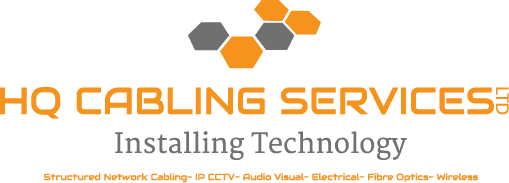The world is constantly finding new ways to connect, and telecommunications stands as the backbone of communication technology. From a simple phone call to the vast expanse of the Internet, it is the invisible infrastructure that keeps us connected.
This telecommunications guide dives into the essence of telecommunications, exploring its purpose, the various types that stitch our world together, and the different forms it takes in our everyday lives.
It also spotlights examples of telecommunications in action, delves into the services it provides, and unveils the intricate networks that make it all possible. Moreover, it highlights the industry giants that build and maintain these global communication highways.

What Is Telecommunications?
Telecommunications is the electronic transmission of information, like voice, data and video, over long distances. This distinguishes it from slower methods of communication, like postal mail.
What Is The Purpose Of Telecommunications?
The purpose of telecommunications is to facilitate the exchange of information across distances, enabling communication and connectivity for various personal, commercial, and societal needs.
What Are The Main Types Of Telecommunications?
There are two main types of telecommunications: analogue and digital. Each serves to connect us over distances, but they work in different ways and offer different advantages.
Analogue
Analogue communication sends continuous signal waves, like traditional radio. Its standout feature is that it translates real-world info, like sounds, into electronic pulses or waves that mimic the original signal.
This type is straightforward and can be great in places without modern digital systems, offering a consistent and familiar method of communication.
Digital
Digital communication turns information into a numeric format, usually binary numbers. This method’s key feature is the conversion of data into a series of ones and zeros, which can enhance the clarity of transmissions and reduce errors.
The perks for users include clearer calls, more robust internet connectivity, and efficient network use, which can lead to a generally improved experience.
What Are The Different Forms Of Telecommunications?
Telecommunications includes various methods for transmitting information over distances, with each form offering unique benefits and challenges. These methods are vital for global connectivity and information sharing.
1. Wired Networks
Wired networks use cables to connect devices for communication.
Pros
- Stable connection
- High data security
- Fast data transfer speeds
Cons
- Costly infrastructure
- Difficult to scale
- Limited mobility for connected devices
2. Wireless Networks
Wireless networks allow devices to connect and communicate without physical cables.
Pros
- Mobility and convenience
- Easier installation
- Scalability
Cons
- Prone to interference
- Lower security
- Variable connection quality
3. Radio Communication
Radio communication uses radio waves to transmit information without wires.
Pros
- Wide coverage area
- Portable and accessible
- Effective for broadcast communication
Cons
- Susceptible to interference
- Limited bandwidth
- Requires licensing
4. Television Communication
Television communication transmits visual and audio content through electromagnetic waves.
Pros
- Mass outreach
- Visual and audio information
- Real-time broadcast capability
Cons
- Limited interaction
- Expensive production and distribution
- Spectrum scarcity
5. Satellite Communication
Satellite communication uses orbiting satellites to relay signals across the globe.
Pros
- Wide-reaching global coverage
- Effective for remote locations
- Useful for GPS and weather forecasting
Cons
- High latency
- Expensive to build and launch
- Vulnerable to space weather
6. Optical Communication
Optical communication transmits data through light, often via fibre optic cables.
Pros
- Extremely high-speed data transfer
- Large bandwidth
- Immunity to electromagnetic interference
Cons
- Expensive infrastructure
- Requires specialised equipment for transmission and reception
- Fragility of fibres
What Are Examples Of Telecommunications?
Telecommunications encompasses a variety of technologies that enable communication over distance, from traditional wired telephones to advanced internet-based applications.
1. Wired Phones
Wired phones, or landlines, use physical wires to connect calls.
Pros
- Reliable connection quality
- Independence from the power grid (for basic models)
- Fixed location aids emergency services
Cons
- Limited mobility
- Installation costs and maintenance
- Declining relevance with mobile tech
2. Cell phones
Cell phones are portable devices that use wireless signals to make calls and send texts.
Pros
- High mobility
- Wide range of features beyond voice calls
- Increasingly affordable
Cons
- Dependency on battery life
- Variability in signal coverage
- Ongoing costs (plans, upgrades)
3. Microwave Communications
Microwave communications use short-wavelength radio waves to transmit information.
Pros
- Suitable for point-to-point links
- High bandwidth capacity
- Quick to deploy
Cons
- Line-of-sight requirement
- Susceptible to weather interference
- Limited service area
4. Fibre Optics
Fibre optics transmit data as light through fine, flexible glass fibres.
Pros
- Extremely fast data transfer
- High bandwidth
- Less signal degradation
Cons
- Higher installation costs
- Fragile cables
- Complex repair process
5. Radio
Radio is a form of wireless communication that uses radio waves to transmit information.
Pros
- Wide coverage area
- Accessible technology
- Mobile and portable
Cons
- Limited bandwidth
- Competition for frequencies
- Affected by physical barriers
6. Television Broadcasting
Television broadcasting distributes video content via radio waves or cable networks.
Pros
- Delivers visual content widely
- Supports live events broadcasting
- Variety of channels and content
Cons
- Limited viewer interaction
- Cost of production and content creation
- Competition from streaming services
7. Internet
The Internet is a global network that connects computers and devices for information exchange.
Pros
- Vast amount of information and resources
- Facilitates communication, commerce, and entertainment
- Connects people globally
Cons
- Concerns over data privacy and security
- Digital divide based on infrastructure
- It can be a platform for illegal activities
What Are The Different Telecommunications Services?
Telecommunications services offer a variety of ways for users to connect and share information, including traditional voice communications and modern data-driven solutions.

Voice Services
Voice services enable real-time audio communication between users. These services are essential for direct conversations, whether through traditional landlines, mobile phones, or VoIP technologies.
Data Services
Data services refer to the transmission of non-voice information, such as text messages, emails, and file sharing, which are crucial for modern digital interactions and business operations.
Internet Services
Internet services provide connectivity to the global network, allowing access to a vast array of resources, including websites, streaming media, and online applications vital for information and entertainment.
Cloud Services
Cloud services offer storage and computing resources over the internet, enabling on-demand access to data and applications, supporting remote work and scalable technology solutions.
What Is A Telecommunications Network?
A telecommunications network is a complex system that links devices to facilitate communication over various distances. Here are their types:
1. Local Area Network (LAN)
This type connects devices within a confined space, typically used for fast data exchange and shared services in homes or offices.
2. Wide Area Network (WAN)
WANs span vast geographical areas, connecting multiple smaller networks through different transmission mediums, enabling long-distance communication.
3. Metropolitan Area Network (MAN)
Larger than LANs but more localised than WANs, MANs are ideal for networking across a city or metropolitan area, linking several LANs.
4. Cellular Networks
Cellular networks consist of extensive cell sites and are designed to support mobile communication across expansive regions with wireless connectivity.
5. The Internet
The Internet is the most extensive WAN, a global coalition of interconnected networks that supports countless devices and standardised communication worldwide.
Who Are The Largest Telecommunications Companies?
The telecommunications landscape is dominated by several major players, each with its unique history and industry contributions, including AT&T Inc., Verizon Communications, China Mobile Ltd., Deutsche Telekom AG, and Comcast Corp.
1. AT&T Inc
The American Telephone and Telegraph Company, also known as AT&T, has a rich history dating back to the invention of the telephone. It provides a wide range of services including mobile, broadband, and television.
2. Verizon Communications
Verizon Communications, often known as just Verizon, emerged from a Bell Atlantic and GTE merger, standing today as a leader in wireless and fibre-optic services.
3. China Mobile Ltd.
When it comes to the number of subscribers, China Mobile Ltd., a state-owned enterprise, is the world’s largest mobile network operator. It offers extensive mobile and data services across China.
4. Deutsche Telekom AG
With its headquarters in Germany, Deutsche Telekom AG has evolved into a European telecommunications powerhouse, providing a variety of services like mobile communications and internet.
5. Comcast Corp
Comcast Corporation, known for its Xfinity brand, boasts a significant footprint in cable television and internet service. It also has its hands in media and entertainment through NBCUniversal.
A Few Extra Words
From the essential voice services that connect us with loved ones to the expansive reach of the Internet that opens doors to endless knowledge, telecom is the thread that weaves our society together.
At HQ Cabling Services Ltd, we stand at the forefront of this technological revolution, offering bespoke network cabling services embodying quality and expertise.
With over 18 years of experience, our commitment to excellence has rendered us a trusted partner in the telecommunications field.
From Kent to the broader regions of the UK, we’ve adapted our services to meet the demands of various sectors, ensuring that organisations, homes, and industries stay connected.
Don’t let outdated systems hinder your potential. Get in touch or call us today at 020 3813 1554 for a free, no-obligation quote, and let’s build the foundation for your communication needs together.
Because at HQ Cabling Services Ltd, we’re not just installing technology—we’re connecting the future.

